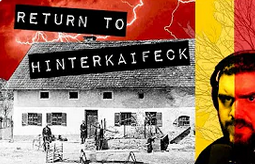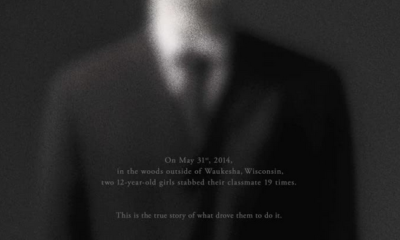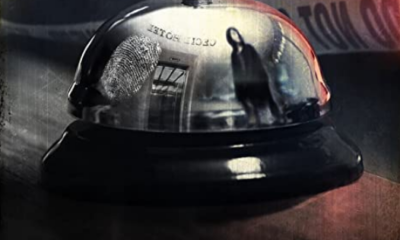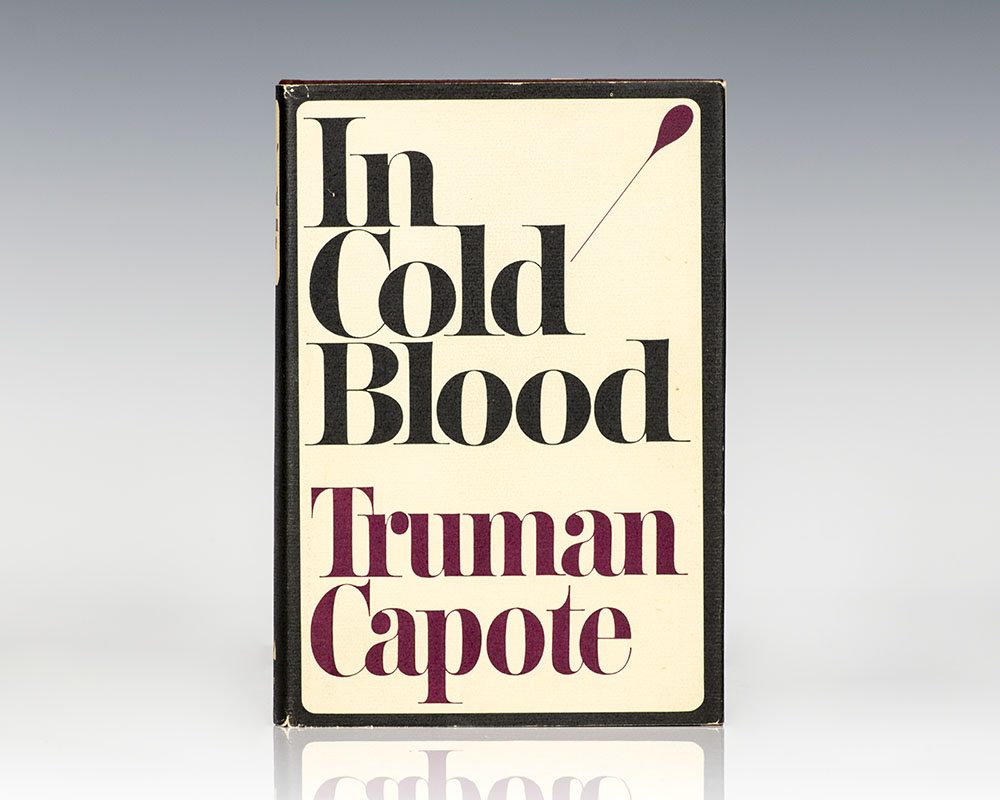
True Crime Studies: An honest review of In Cold Blood
More Videos
Published
4 years agoon
By
Rachel Roth
I know it seems redundant to review In Cold Blood 54 years after it’s been published. The Withering Heights of true crime books, everyone has most likely heard about it by now though there are many who have yet to read it. I believe everyone should crack it open at least once. It’s largely credited as being the founder of the true-crime genre, making it a classic and one of the pioneers of literature, although I am not one to praise any novel just because it has the word “classic” attached to it. I think people should know more about it other than its status.
Truman Capote changed the literary world forever when he published In Cold Blood in 1966. It details the murders of the Clutter family in 1959 in the small farming community of Holcomb, Kansas. The four victims, Herbert Clutter, his wife Bonnie, and their two youngest children, Kenyon and Nancy were found dead in their house one morning with no obvious signs of robbery or any clue as to who did it. There seemed to be no motive.
In Cold Blood shares the last few hours of their lives before it gets into what the story is really about: the two deeply disturbed men responsible, and honestly…I expected something more. With the kind of reputation that this book has I expected something other than what felt like a two-hour special of Criminal Minds. I know In Cold Blood is more or less the first of it’s kind, so when compared to more recent true crime wonders like Helter Skelter, Devil in the White City and Columbine, it’s a slight let down. But read without expectations, and it is a phenomenal piece of true crime literature.
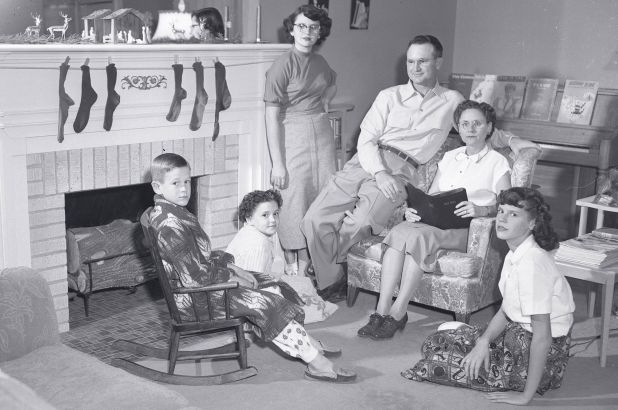
Hickock and Smith
Perry Smith and Richard “Dick” Hickock are the murderers of this story and one doesn’t have to be there with Capote to know that he had conflicting feelings about them. The beginning of the novel talks much about the Clutter family. Enough to make readers mourn their deaths when it happens but much like how they died, the Clutter’s cease to exist once their hearts all stop beating. Capote drops them as if they never existed, further enforcing the “in cold blood” feeling the crime created when it first happened.
A crime of seemingly random chance. It’s that randomness that truly fascinated the public. “Of all the people in all the world, the Clutters were the least likely to be murdered.”
There are really two narratives in the novel. The confusion of the crime itself and that of Perry Smith. There’s a whole story about the creation of In Cold Blood that claimed Truman Capote became very attached to Smith while interviewing him. Almost too attached some might say, and the novel pretty much confirms this. The amount of time Capote spends on Smith is astounding, even the worst bits are spun in a sympathetic light. He spends pages and pages detailing Smith’s childhood, personality, and motivations while hardly a few paragraphs are saved for Hickock. (Not that I blame him because Dick was truly a dick.)
Make up your mind Capote
By focusing on Smith and his dark, damaged mind, it keeps the shock and pointlessness of the crime front and center. If Capote focused more Hickock it would have taken an entirely different perspective. Smith was harder to pin down and apparently had the capability to do good, which in fact was the alleged point of In Cold Blood. Capote was supposedly trying to humanize the Clutter’s killers, but in all honestly, the novel jumps around too much to make it believable.
Capote added in details that were unnecessary and then dropped them just as quickly. He goes too deep into trivial facts and not deep enough into important ones. He shows so much of Smith’s upbringing, painting him as a victim of his own mind and society, but then throws in a detail that disregards all of that. Then there’s the story of Hickock, the one who instigated the crime in the first place, who Capote doesn’t even try to reform in the reader’s eyes. (Again, I don’t blame him). A psychopathic pedophile rapist who admits that he only robbed the Clutters because he wanted to rape 16-year-old Nancy. (He never did by the way. Smith stopped him before he got the chance.)

Jammed back race to the finish line
The final section of the novel is where it struggles to stay afloat. Smith and Hickock are arrested and sentenced to death but Capote doesn’t stop it there. He doesn’t even skip ahead and show their execution. No. He spends several pages discussing their eventless life on death row. He even goes as far as to introduce some of their neighboring murderers and their life stories. Lowell Lee Andrews a.k.a. “The Nicest Boy in Wolcott” and spree killer buddies George Ronald York and James Douglas Latham. They appear in the final section of In Cold Blood and stick around as if they had been there the whole time. All the while, Smith and Hickock go on, unconcerned about their approaching death date.
Verdict
I was honestly expecting something more chilling than what I got. Over the years, I’ve heard many rant and rave over the sheer cold brutality featured in Capote’s novel, the stuff of nightmares. Maybe it’s because I grew up obsessing over serial killers and read too many books detailing their twisted crimes but what was featured In Cold Blood feels like a combination of attempted psychology and point-by-point descriptions of true-life events but not enough of either. There is also an incredibly long section that deals strictly with their trial that feels a bit redundant. It’s used to include the public perception of them, their reactions to the public, their confessions, and their psyche evaluations but Capote crams everything together as if he was rushing to the finish line.
The true strength of In Cold Blood lies in its style. A true crime book that’s written in the form of a novel starting with a prologue, withholding the gory details until the very end, and ending with two men hanging from the gallows. Despite my complaints, it’s very good.
 (3.5 / 5)
(3.5 / 5)
Rachel Roth is a writer who lives in South Florida. She has a degree in Writing Studies and a Certificate in Creative Writing, her work has appeared in several literary journals and anthologies. @WinterGreenRoth

You may like
Dear readers, the time has come for some answers. At least, that’s what the teaser for the new installment of Monastery says. As usual, it delivers what it promised and more as we untangle the past and its connection to the present. Without any further ado, let’s talk about it, shall we?
Plot
We start the episode with a blast from the past. Cassandra and Celeste (Nicole’s aunt and Arthur’s lover for those with short-term memory) are in the hospital because of Celeste’s pregnancy complications. Cassandra promises her former best friend that she will ruin her all the while we find out Francis’s real parentage. The picture is finally starting to come together.
As we are back in the present day, our group is more scattered than ever. Thomas is his father Walt’s prisoner while David is still running around looking for Rocky. Fred on the other hand is just looking for any place to crash, homelessness and all. Our dethroned beauty queen Nicole is hiding away from everything – including her shame. Last but not least, little Henry is spending his time taking care of Nana Beth. Guessing that is his redemption for trashing all the evidence of Albert’s murder gathered so far. Although frustrating, his actions are understandable – the poor kid is traumatized and just wants some peace.
George Turner’s murder is still an active investigation. It is obvious that this cover-up wasn’t nearly as successful as Albert’s. I sure as hell hope that Francis gets his comeuppance sooner rather than later. Not particularly because Turner didn’t deserve it but so the rest of the characters would be safe from him. Although as I’ve said before, his clear descent into sociopathic tendencies is kind of fascinating to watch.
We also get an interesting development in what so far has been a tiny background detail, which is the Monastery Werewolf. As the creature comes to visit Rocky, we find out our resident star dog considers it family. Not going to lie, it took me a few reads to understand what this means. Now I’m getting all sorts of ideas as to how the supernatural ties into the rest of the story.
Speaking of the supernatural, it is none other than Madame Witch who frees Thomas from his captivity. Well, her contribution is indirect as she sends his best friend Alfie to help instead. Although I’d say currently the two should set their dynamic status to ‘it’s complicated’. As soon as he’s free, Thomas is immediately back in his detective mode. For arguably the first time he gets some real answers as we find out the whole backstory of Albert/Celeste/Cassandra triangle. I won’t go into details as that trio deserve their own article but let’s just say it gives Cassandra a big ass motive for killing her husband. Not to mention the way she took Francis from Celeste was quite brutal to read.
We reach the lead-on for the grand finale as David and Henry are coming to free Rocky. This naturally comes with a condition – they must hand Francis the key they found during the investigation. Little do they know Nicole is already there being held at gunpoint. Oh, and Fred should also be around somewhere as he was sleeping there the night before. Thomas might be a little late to the party since he and Alfie are held a knifepoint by Rick (seems like a running theme here). Nothing good can come from this.
Overall thoughts
This episode does a perfect job of setting up the big finale. It reveals everything we need to know except the main question – who killed Albert? At this point, while it of course still matters, this story is so much more than that. It’s about all the mess that this family has got themselves into, how with each mistake they kept digging deeper, and how it took a whole new generation for all of that to come up to the surface. I can only hope our investigative gang will make it out alive…
 (5 / 5)
(5 / 5)
More thoughts from the author:
1. Although a minor character in comparison, Walt strikes me as someone who’s there to represent the themes of Monastery – someone who will do horrible things in the name of family. What was your intention with his characterisation, especially considering he works for justice (aka the police?)
This is why I will always defend my decision to have a large cast, as opposed to most books – when you get even the slightest sense of fleshing out a minor character, it feels so rewarding. Walt, to me, takes the crown of “father of the year”, even if he does it by locking his son up in the bedroom. He is protecting his wife’s secret, protecting his son’s innocence, and doing so by going against his core ideals – i.e., a detective covering up a murder. He’s also based on a favourite uncle of mine, so it makes me happy to give him his moment to shine.
2. Something I thought of while writing this review – the cover up of George Turner’s murder seems to be a kind of juxtaposition as to how neatly Albert’s was since the police keep discovering evidence left and right (and how Francis doesn’t particularly seem to care). Was this intentional on your part?
It all adds up to plot convenience, and I have no shame in admitting that – Albert’s murder was so neatly covered up because I needed it to go unsolved for 14 years, whereas the reader knows who killed George, so there is no need for the cover-up to be well done.
As for Francis’ reaction to the murder, he started out anxious and paranoid after the fact, but he has grown into a state of not caring, which further depicts his descent into darkness – he knows he’s close to his goal (of finding the money and leaving his family), so there is a sense of invincibility taking over. He is stepping into his main villain energy and we are here for it!
3. Alfie has been yet another background character until now and yet he is the one who rescues Thomas. To me he seems like the friend who genuinely cares for Thomas and who gives him that reality check he sometimes needs to get out of his own head. Was that at least partially why you chose to bring him in for the grand finale?
Fun fact: Alfie was originally a series regular. However, halfway through writing the series, I realised I wasn’t using him as much as I’d wanted to, so I bumped him down to recurring. But the original plan always saw him and the other regulars coming together for the big climax, which is why he is in the fold. Alfie is someone who keeps Thomas grounded (if not humbled), since Thomas has the slight tendency to, well, think he’s better than everyone else. What’s coming up for them is one of the most exciting things I’ve ever written about.
4. Lastly, it’s not so much a question but rather a well done for how you crafted the Albert-Celeste-Cassandra dynamic! I was very invested despite knowing the outcome. Weirdly enough, while hating Cassandra for how she handled it, I sort of understood why she thought that Celeste deserved it? Either way, congrats for managing to craft these love stories in the midst of all the murdery goodness.
Thank you so much. As I’ve said before, romance is not my strong suit, but I do love a soapy triangle – and if it ends with gun violence, even better! The reveal of this mystery is probably my favourite sequence in the series so far.
The evils lurking Los Angeles are unveiled in CJ Leede’s 2023 debut novel, Maeve Fly. The novel is a gruesome love letter and ode to Los Angeles and horror icons, centering on the titular character, Maeve Fly. She is, in short, a Disney Princess and serial killer.
Below the Depths of Anaheim
By day, Maeve Fly works as a princess in “the park.” It is is never named, but obviously Disneyland as depicted by Maeve’s vibrant descriptions of the princesses, furry costumed animals, and movie-themed rides. She plays a Scandinavian princess (Elsa) and genuinely loves the job and her coworker, Kate. In her personal life, Maeve tends to her sick, comatose grandmother, former starlet Tallulah, and her grandmother’s cat.

Maeve has an ordinary personal life, including going out with Kate and takes biweekly, afternoon trips to a Tiki bar in which she, a man who may or may not be Johnny Depp, and the bartender are the only patrons. Her interests include the macabre and all things horror and Los Angeles history, her love for the city a central theme throughout the novel. When Maeve meets Kate’s brother, Gideon, Maeve’s sense of self unravels.
Mirroring Fiction
The problem with Maeve’s sense of self, however, is that she has no idea who she really is. She adopts the personalities of literary characters, from Dostoevsky’s Notes from Underground narrator to those in James, Kant and Milton novels.
Maeve is selfish, antagonistic, and very selective of the people she lets in her life. She is an unreliable narrator with an unpredictable temper and ultraviolent tendencies.
Leede’s prose and writing of Maeve invites a new narrative to the genre. Maeve is persistent in her disgust with how often villains need a tragic backstory as excuse for their monstrous behavior, especially when the villains are women. Leede dismantles that trope and provides Maeve with no reason for her treacherous behavior. It is simply who Maeve is.
An Ode to Horror
Maeve Fly is everything I love in a horror story. It is an unpredictable slasher with comedy and heart. Leede has displayed her talent for writing horror. She has created a story that pays its dues to the genre’s long iconic history — one example is the references to Pyscho or American Psycho — but is wholly unique in it’s own form. From captivating dialogue to visceral depictions of horror history and Los Angeles’ sites, like the La Brea Tar Pits, the novel sucks you in until the very last, bone chilling sentence.
 (5 / 5)
(5 / 5)
Released in August of last year, Mister Magic is written by author Kiersten White. And I’m going to give you the warning that I wish I’d have had when I started reading it.
This book deals largely with the systemic issues prevalent in the Church of Jesus Christ of Latter-Day Saints. While there are no overt discussions or descriptions of child abuse, I would argue that it’s alluded to.
In the interest of full disclosure, White lets us know in the acknowledgments that she was raised Mormon and is not anymore. I was also raised Mormon and am not anymore. And this book wrecked me.
The story
Our story begins with a young woman named Val. She’s been living with her father on an off-the-grid farm for most of her life.
When he dies, a mysterious stranger shows up at his funeral. This man, named Marcus, seems to know her right away. She knows him as well, though she doesn’t seem to remember why.
Eventually, he explains that she was on a children’s TV show called Mister Magic. A show that she has no memory of at all.
And this makes sense because there is little to no evidence online that the show exists. There are no clips, no scripts, no cast lists. It’s as if the show vanished entirely when the last episode aired.
Oh, and during that last episode, a kid probably died.
Desperate to remember her childhood and maybe even reconnect with her mother, Val leaves with her former cast mates for a reunion and podcast taping.
As the Circle of Friends reforms, fans of the show online rejoice. If the cast is getting back together, it must mean Mister Magic is coming back.
And that’s exactly what the mysterious creators have in mind.
What worked
This book shows a world that is all but impossible to describe from the outside. Long before I realized this book was an allegory for Mormonism, I was catching signs. It felt familiar.
Everyone was a little too nice. Everyone seemed to be holding back a little. Everyone seemed eager to do things for other people, almost like they felt like they had to justify their presence.
I also appreciated that we talked about child abuse without talking about child abuse. Through the book, we learn that one member of the cast, Kitty, is missing. Her disappearance heralded the end of the show, but no one wanted to talk about what happened to her.
This, I thought, was a subtle and brilliant way to talk about abuse without having to go into upsetting details. And in not adding these details, White leaves us to invent them ourselves. Which is always worse.
Sometimes it’s the notes you don’t play that make the biggest impression.
To that same end, there is no real gore in this book. No charred bodies, no blood. No gruesome scenes at all. But I feel like that was intentional. I’ll also point out that in reading other reviews for the book, I noticed that others criticized the character for being rather bland and one-dimensional. Both of those things are likely on purpose, and part of proving a point.
In the book, each character remembers Mister Magic pulling them back. He taught them the habit of dulling themselves down. Don’t paint in such a wild manner. Don’t shout so loud. Don’t stray too far.
Don’t draw attention to yourself. Don’t be different.
In the end, Mister Magic managed to do exactly what the very best horror does. It took a real horror that most people do not experience and turned it into a metaphor that everyone can understand. And it doesn’t have to be just former Latter Day Saints members. All survivors of religious abuse will see themselves in this. But we’ll also see all the other lost children, trapped with Mister Magic, and realize we are not alone.
 (5 / 5)
(5 / 5)
If you’re a fan of my work, please check out my latest story, Nova, on Paper Beats World. New chapters launch every Monday, Wednesday, and Friday.

